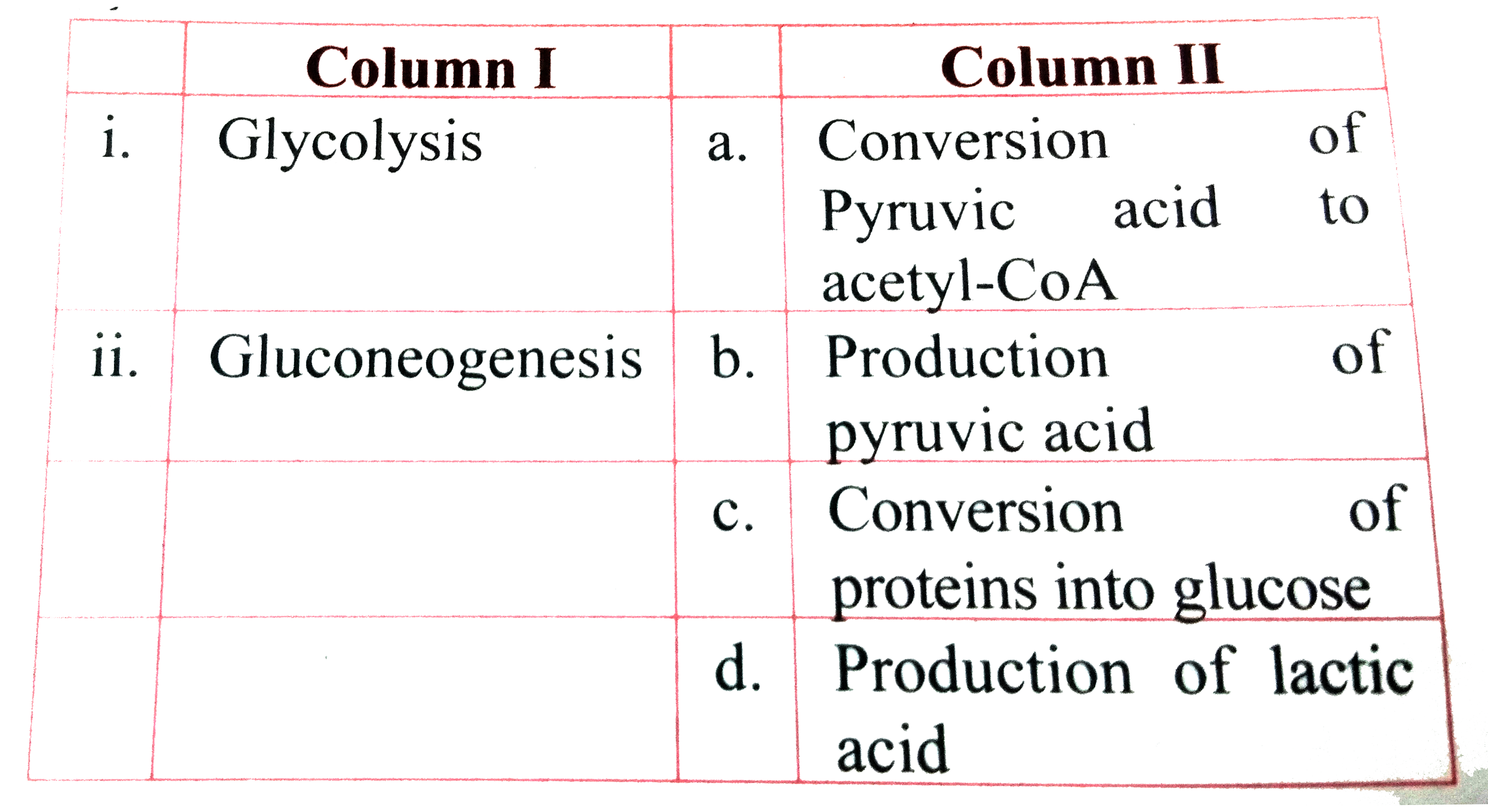Cellular respiration is the oxidation of foodstuffs for the production of energy. During aerobic respiration, complete oxidation of glucose takes place.Contradictor to this, glucose is incompletely oxidized durin anaerobic respiration . Many microbesare capacble of surviving anaerobically in environments that lack oxygen. Anaerobic respiration occurs via two steps,namely glycolysis and fermentation. The pyruvic acid formed during glycolysis is converted to organic acids or alcohols during anaerobic process. higher animals and plants, or seeds submerged in soil under water are capable ofperforming anaerobic respiration, when the oxygen levels are depleted .Even body cells like erythrocytes and mscle cells perform anaerobic respiration.
How does anaerobic respiration occur in yeast?Solution in Marathi
Step by step video & image solution for Cellular respiration is the oxidation of foodstuffs for the production of energy. During aerobic respiration, complete oxidation of glucose takes place.Contradictor to this, glucose is incompletely oxidized durin anaerobic respiration . Many microbesare capacble of surviving anaerobically in environments that lack oxygen. Anaerobic respiration occurs via two steps,namely glycolysis and fermentation. The pyruvic acid formed during glycolysis is converted to organic acids or alcohols during anaerobic process. higher animals and plants, or seeds submerged in soil under water are capable ofperforming anaerobic respiration, when the oxygen levels are depleted .Even body cells like erythrocytes and mscle cells perform anaerobic respiration. How does anaerobic respiration occur in yeast? by Biology experts to help you in doubts & scoring excellent marks in Class 10 exams.
Topper's Solved these Questions
- BOOK - TARGET PUBLICATIONCHAPTER - LIFE PROCESSES IN LIVING ORGANISMS PART - 1 EXERCISE - GIVE REASON6videos
LIFE PROCESSES IN LIVING ORGANISMS PART - 1
- BOOK - TARGET PUBLICATIONCHAPTER - LIFE PROCESSES IN LIVING ORGANISMS PART - 1 EXERCISE - DISTINGUISH BETWEEN4videos
LIFE PROCESSES IN LIVING ORGANISMS PART - 1
- BOOK - TARGET PUBLICATIONCHAPTER - LIFE PROCESSES IN LIVING ORGANISMS PART - 1 EXERCISE - MATCH THE FOLLOWING5videos
LIFE PROCESSES IN LIVING ORGANISMS PART - 1
- BOOK - TARGET PUBLICATIONCHAPTER - LIFE PROCESSES IN LIVING ORGANISM PART-2EXERCISE - GIVE SCIENTIFIC REASONS4videos
LIFE PROCESSES IN LIVING ORGANISM PART-2
Similar Questions
Kreb's cycle is also known as citric acid cycle.
08:11View SolutionDistinguish between
Glycolysis and TCA cycle04:42View SolutionMatch the following columns
 View Solution
View SolutionChildren born to older women may commonly have birth defects.
View SolutionDistinguish between the following:
(a) Aerobic respiration and Anaerobic respiration
(b) Glycolysis and Fermentation
(c) Glycolysis and Citric acid Cycle06:14View Solutionअवायवीय श्व्सन के दौरान पाइरुविक अम्ल द्वारा पेशियों में निर्मित होता है-
01:42View SolutionGlycolysis and fermentation are two steps of anaerobic respiration.
04:34View SolutionIn anaerobic respiration, glucose is oxidized in three steps.
06:37View SolutionDistinguish between the following: (a) Aerobic respiration and Anaerobic respiration (b) Glycolysis and Fermentation (c) Glycolysis and Citric acid Cycle
05:42View SolutionWhat is the common step in aerobic and anaerobic pathway ?
08:42View SolutionDistinguish between the following :
(a) Aerobic respiration and Anaerobic respiration .
(b) Glycolysis and Fermentation.
(c ) Glycolysis and Citric acid Cycle .05:05View SolutionDistinguish between the following:
(a) Aerobic respiration and Anaerobic respiration
(b) Glycolysis and Fermentation
(c) Glycolysis and Citric acid Cycle03:03View SolutionDistinguish between the following:
(a) Aerobic respiration and Anaerobic respiration
(b) Glycolysis and Fermentation
(c) Glycolysis and Citric acid Cycle01:27View SolutionDistinguish between the following : (a) Aerobic respiration and anaerobic respiration (b) Glycolysis and fermentation (C) Glycolysis and Citric acid cycle.
01:35View SolutionDistinguish between the following:
(a) Aerobic respiration and Anaerobic respiration
(b) Glycolysis and Fermentation
(c) Glycolysis and Citric acid Cycle07:08View Solution

